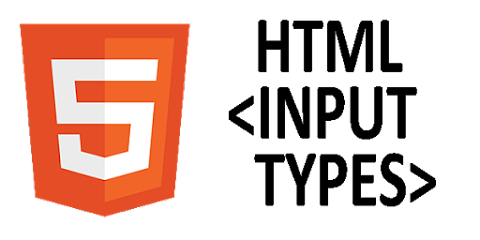10 Essential HTML Input Types with Examples
 Shrihari M
Shrihari M
HTML input types are an essential part of form building in web development. They allow users to enter data, make selections, and submit information easily. In this article, we will explore 10 essential HTML input types with examples, showcasing their functionality and best practices. Let’s dive in!
Text Input
Password Input
Email Input
Number Input
Date Input
Checkbox Input
Radio Input
File Input
Range Input
Submit Input
Photo by Ilya Pavlov on Unsplash
Text Input
The <input type="text"> element is the most commonly used input type. It creates a single-line text input field where users can enter alphanumeric characters. Here's an example:
<label for="name">Name:</label>
<input type="text" id="name" name="name">
In the above code snippet, we have created a text input field for the user’s name. The for attribute in the <label> tag should match the id attribute of the associated input element. This helps with accessibility and improves the user experience.
Password Input
To create a password input field that obscures the text entered, we can use the <input type="password"> element. Here's an example:
<label for="password">Password:</label>
<input type="password" id="password" name="password">
The above code snippet demonstrates a password input field where the entered characters are masked (usually with asterisks) for security purposes. It is important to note that passwords should never be stored in plain text on the server-side.
Email Input
For capturing email addresses, we can use the <input type="email"> element. This input type validates that the entered value is in a valid email format. Here's an example:
<label for="email">Email:</label>
<input type="email" id="email" name="email">
By using the type="email" attribute, the browser will validate that the entered value is a properly formatted email address.
Number Input
The <input type="number"> element allows users to enter numeric values. It provides validation and allows for additional attributes such as minimum and maximum values. Here's an example:
<label for="quantity">Quantity:</label>
<input type="number" id="quantity" name="quantity" min="1" max="10">
In this example, we have defined an input field where users can enter a quantity between 1 and 10 (inclusive). The min and max attributes control the minimum and maximum allowed values, respectively.
Date Input
To enable users to select a date, we can use the <input type="date"> element. It opens a calendar widget for ease of selection. Here's an example:
<label for="birthdate">Birthdate:</label>
<input type="date" id="birthdate" name="birthdate">
The above code snippet creates a date input field. When the user clicks on the field, a date picker/calendar will pop up, allowing them to choose a date conveniently.
Checkbox Input
The <input type="checkbox"> element allows users to select one or multiple options from a predefined set of choices. Here's an example:
<label for="food">Select your favorite food:</label><br>
<input type="checkbox" id="pizza" name="food" value="pizza">
<label for="pizza">Pizza</label><br>
<input type="checkbox" id="burger" name="food" value="burger">
<label for="burger">Burger</label><br>
<input type="checkbox" id="sushi" name="food" value="sushi">
<label for="sushi">Sushi</label><br>
In this example, we have created a set of checkbox elements where users can select their favorite food items. The value attribute is used to capture the selected value(s) on the server-side.
Radio Input
The <input type="radio"> element is used when users need to select a single option from a predefined set of choices. Here's an example:
<label for="gender">Select your gender:</label><br>
<input type="radio" id="male" name="gender" value="male">
<label for="male">Male</label><br>
<input type="radio" id="female" name="gender" value="female">
<label for="female">Female</label><br>
<input type="radio" id="other" name="gender" value="other">
<label for="other">Other</label><br>
In the above code snippet, we have created a set of radio button elements for selecting the user’s gender. The name attribute groups the radio buttons together, while the value attribute captures the selected value.
File Input
To allow users to upload files, we can use the <input type="file"> element. Here's an example:
<label for="avatar">Choose an avatar:</label>
<input type="file" id="avatar" name="avatar">
In this example, the user can browse their computer to select a file to upload. The server-side code will handle processing and storing the uploaded file.
Range Input
The <input type="range"> element creates a slider control where users can select a value from a range of values. Here's an example:
<label for="volume">Volume:</label>
<input type="range" id="volume" name="volume" min="0" max="100">
In the above code snippet, we have created a range input field that lets users select a volume level between 0 and 100. The min and max attributes define the range.
Submit Input
The <input type="submit"> element is used to submit form data to the server. Here's an example:
<input type="submit" value="Submit">
In this example, the user can click the submit button to send the form data to the server for processing.
Conclusion
HTML provides a variety of input types to capture different types of data and user interactions. By utilizing these input types effectively, you can create user-friendly forms that enhance the overall user experience. Experiment with these input types and explore their unique attributes to build dynamic and interactive web forms.
Enjoyed reading this? Please share it with others.
Thanks for the read. Cheers!!!. You are Awesome!
Sharing is Caring. So Share as much as possible ;-)
Follow me on twitter/X
Follow me on linkedIn
Check out My portfolio
Subscribe to my newsletter
Read articles from Shrihari M directly inside your inbox. Subscribe to the newsletter, and don't miss out.
Written by

Shrihari M
Shrihari M
I am a highly skilled Front End developer with a strong industry background in building websites, web applications, and hybrid mobile applications. My expertise lies in JavaScript, and I possess professional experience working extensively with React.js and Redux.